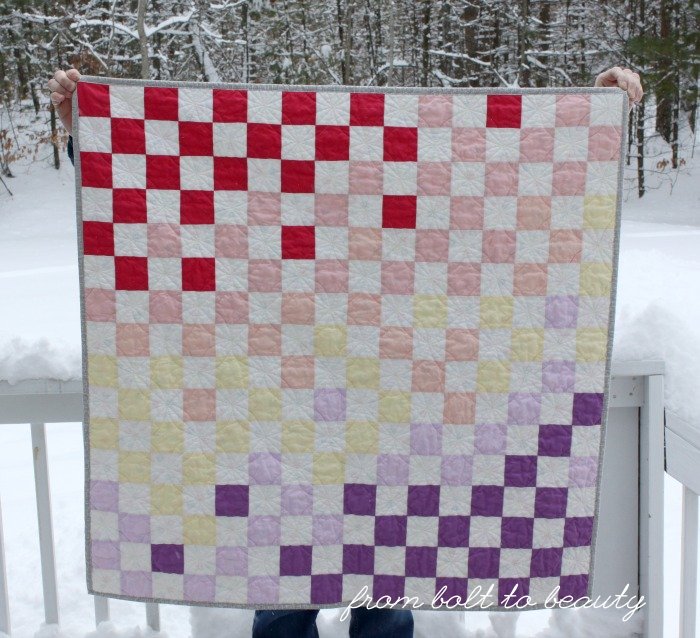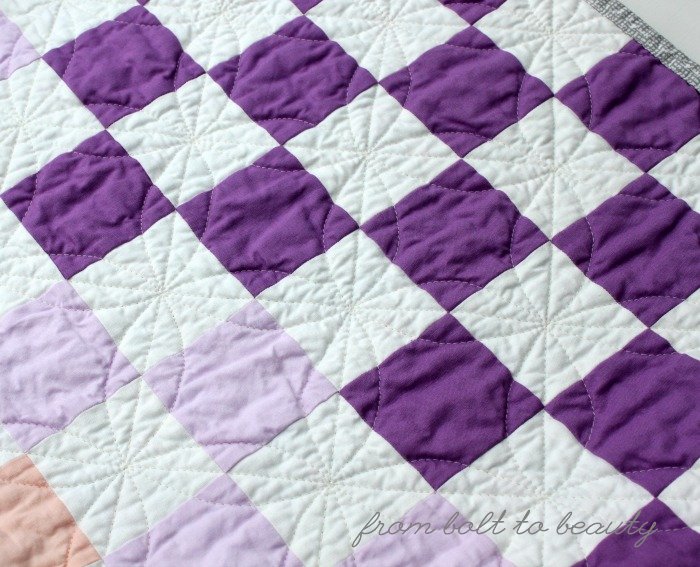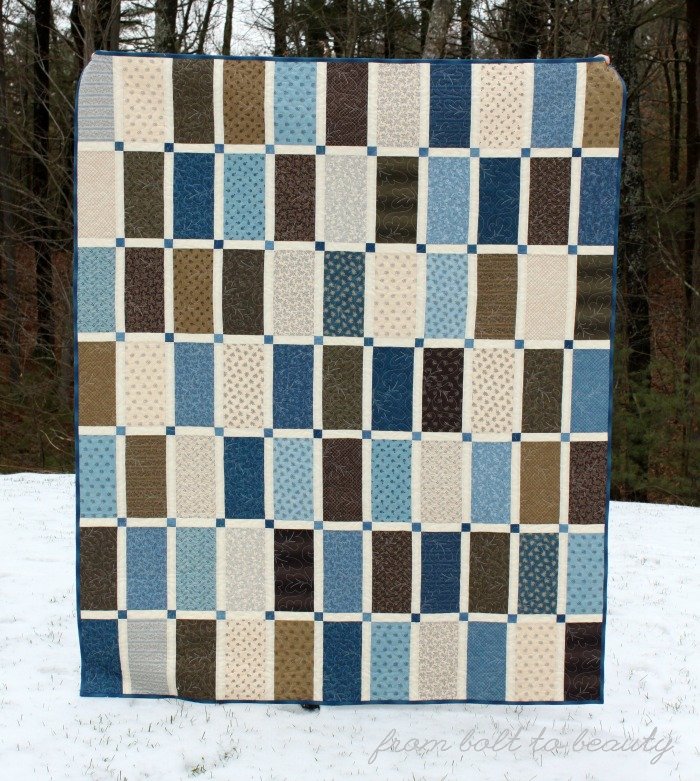My latest finish, the Cargo Duffle Bag pictured below, was in time-out for almost 18 months. First, I couldn’t decide on a fabric for the pockets, then I misplaced the zipper and was waiting for it to turn up, and then I had difficulties shortening the replacement zipper I bought when I accepted that the original one was lost forever.
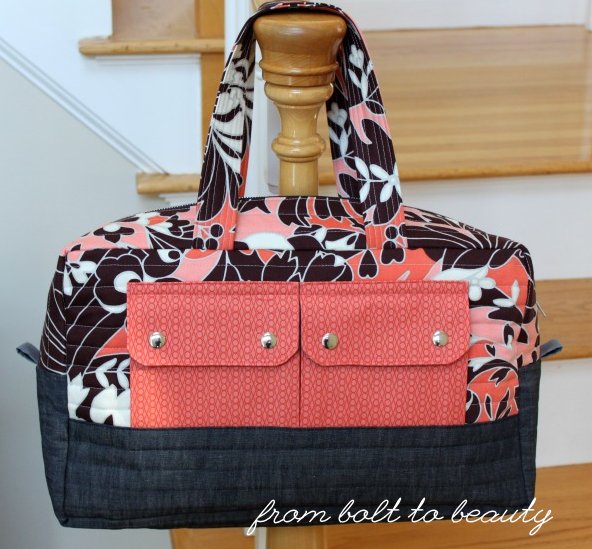 |
| Here’s the Cargo Duffle in all its glory! |
These obstacles messed with my perspective: How would I ever be able to finish this project and finish it well? This lack of self-confidence was completely unfounded because I had made this pattern before! (For real. See that version here.) With all sense of reason out the window, the time-out morphed into full-fledged procrastination!
If only I knew how beautiful the bag would be in the end, I think I would have shortened the 18-month time-out to 8 or 9 months. (Ha!) It’s the combination of fabrics that do it for me. The main fabric is from August Fields, an old home-dec line from Amy Butler. The bottom gusset and accent pieces are a denim-linen blend that was fabric-y love at first sight. It’s the most amazing shade of blue, with gray undertones that give it an air of sophistication. As for the pocket fabric ... after scouring my local quilt shops for the right print, I found this one in my stash. The bright salmon fabric is from Lizzy House’s Catnap line.
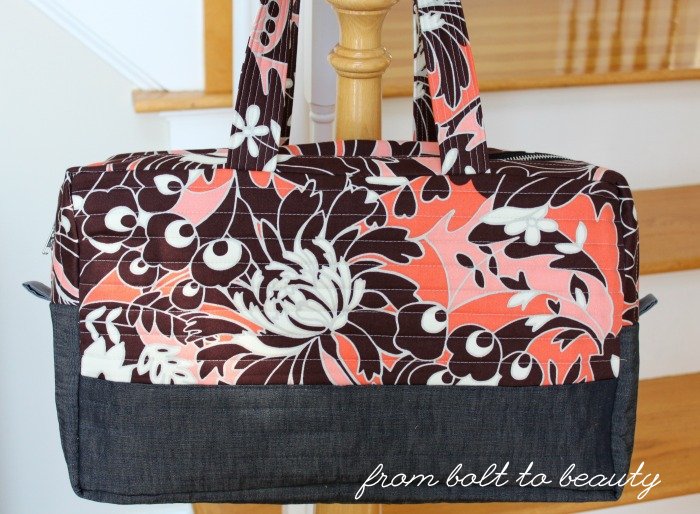 |
| Isn’t that Amy Butler print divine? |
Each of those fabrics is lovely in its own right, but together they’re even more striking. Truly, fabric is meant to shine in completed projects and not live on a bolt or in a stash!
Should you want to make a Cargo Duffle of your very own, you can find the free pattern, by Noodlehead, on the Robert Kaufman website. It is not for the beginning sewist. The instructions, although well written, presume you have experience following patterns.
As I mentioned earlier, I used home-dec fabrics for the main bag. This was in addition to the canvas layer indicated in the pattern; the home-dec and canvas worked well together to give the bag some substance and structure. The pattern uses two fabrics for the handles, but the denim wasn’t working for me—it didn’t lie nicely—so I stuck with just one, the August Fields fabric. (Even though I went rogue, the handle construction in the pattern is brilliant. I’ve used it elsewhere, like here.)
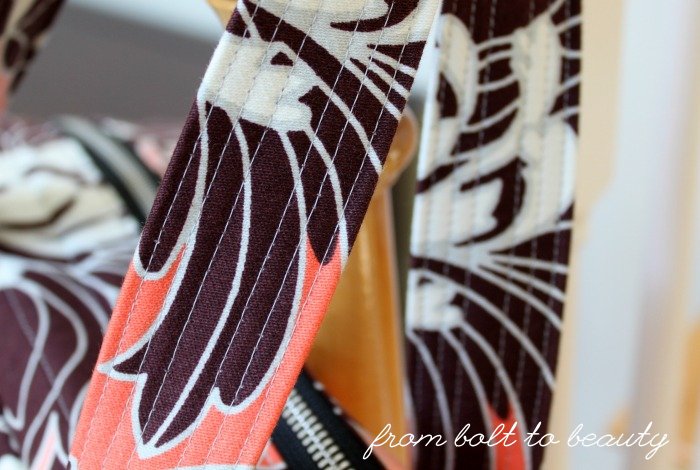 |
| The handles also feature August Fields. |
The pattern calls for binding the exposed seams in the bag’s interior. I chose to add a lining instead. I sewed together a bottom gusset, two zipper gussets, a front, and a back in a quilting cotton to create that lining. I couldn’t hand-sew it in the bag easily (the canvas was unpleasant to poke a needle through), so I Wonder Clipped the heck out of it and, following a line of quilting on the zipper gusset, sewed into the bag’s interior. For more ideas on how to pimp out this pattern, I recommend Coconut Robot’s post here.
 |
| You can see how the quilting line along the zipper is extra thick. That’s where I attached the lining. |
OK, it’s confession time! Who else has been swallowed up by the procrastination vortex?!
Linking up to Needle and Thread Thursday, Let’s Bee Social, and Finish It Up Friday ...


